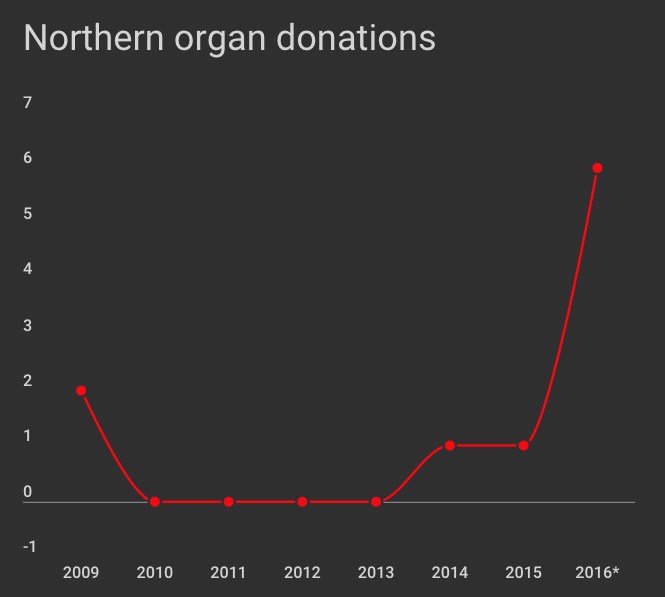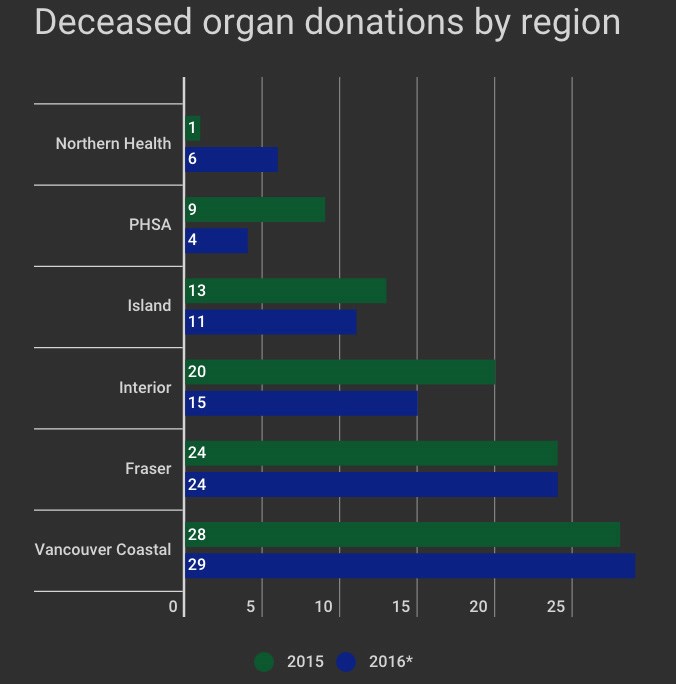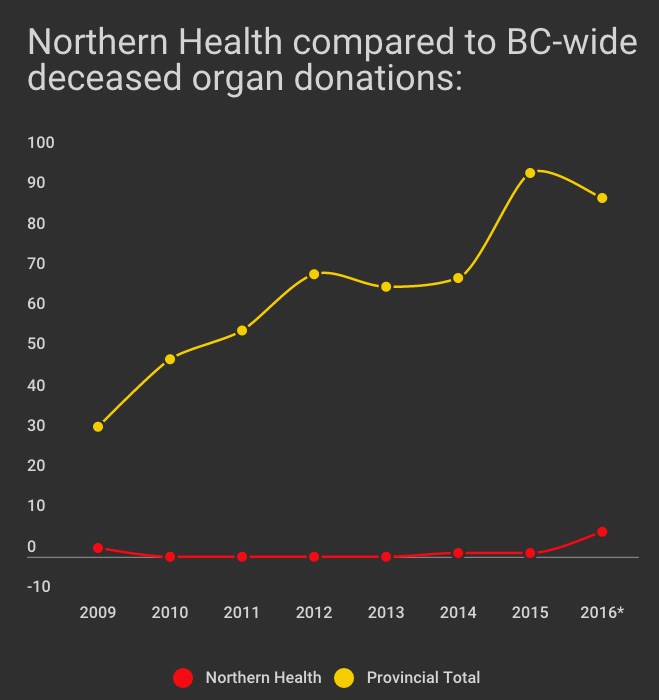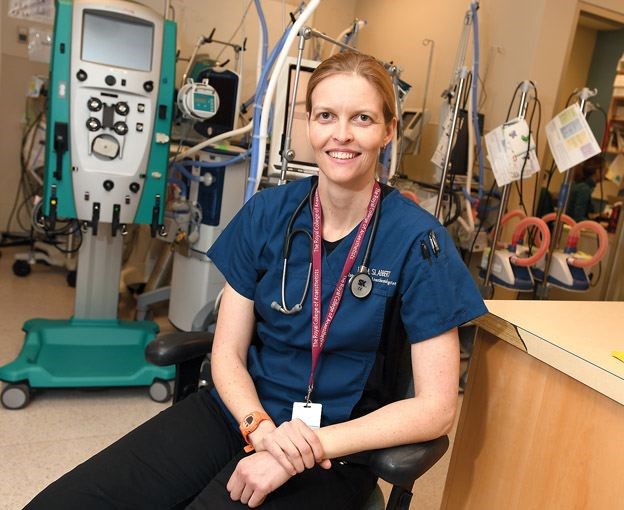Northern organ donations picked up in 2016, after six years of static numbers that sat at either zero or one.
As of mid-November, the north reported six donors, putting the region's rate in the realm of the rest of the province, which has seen a steady climb in donors in the last handful of years.

"We've had quite a run of organ donation candidates recently," said Dr. Marietjie Slabbert, a specialist in critical care and anesthesia and the new intensive care unit medical director at the University Hospital of Northern B.C.
It meant about 23 organs went to those in need, she said. In some cases, one person can donate as many as eight to 10 organs.
Last year, there were 95 deceased organ donors province-wide, tripling B.C.'s 2009 numbers, but the north was far behind.
Each of the last two years, there has been only one organ donor from the north following four years of none, but Slabbert sees that changing.
"I think in the past there was almost a perception, I would imagine, this can't be done," said Slabbert, who in August replaced Dr. Fareen Din as B.C. Transplant's "physician champion" for organ donation in Prince George. "We've now shown it is very feasible, it works really well. We've not had any issues. There is a lot of logistics around it... but I think we've proven this year that it is doable."
B.C. is on track to match last year's record 95 donations, with 89 as of Nov. 23. Vancouver Coastal Health Authority increased by one donor to 29, Fraser Health has already matched last year's 24 donors, and both the interior and island are a few behind 2015 totals.

When the hospital has an organ donor, it contacts BC Transplant, which flies in a surgeon team to retreive the organs. The organs then get packaged and flown to the patients in need.
"Patients get looked after really well. There's a lot of dignity in it," said Slabbert, who worked in England for 10 years and said respect for that gift is treated with the same honour in all operating rooms. "Before a patient goes to surgery there's a moment of silence to honour their donation."
Northern Health estimates it serves a population of around 300,000, which puts this year's donor numbers up to 20 per million. That's on par with the B.C. average for deceased donors and above Canada's 16.6 donors per million, according to a BC Transplant fact sheet.
The organization's donation medical director said some of that increase can be connected to a shift to consider circulatory death rather than the traditional neurological death.
That approach has been introduced in Prince George and at least two donors were classified as DCD - or donation after circulatory death, Keenan said.
"(It) was something that previously wasn't being practiced there. This is happening at other hospitals throughout B.C." he said.
"It's not available everywhere because it requires coordination between staff and understanding how to do it."
This year's numbers are a "big change" and the DCD designation "would suggest we would expect to see ongoing rates in that reach or higher," he said.
"We'll have to see but it's good to see the medical and all the health care folks are supporting it."
According to BC Transplant, 630 people are currently waiting for an organ but less than one per cent of British Columbians die in a way that would enable them to become an organ donor.
Though the province is nearing its target of 22 donors per million, Keenan said "we want to go higher," noting B.C. is behind many countries, like the United States or Spain, which has 35 donors per million.
Both Keenan and Slabbert said the north can even expect to see more than six donors in coming years.
"We're a very, very busy hospital," said Slabbert, noting it's expanded into a regional referral centre.
"The sickest and most injured patients from within this region that don't need neurosurgeons or cardiothoracic surgeons, they would end up coming to us."
Sites that see neurosurgical and trauma patients will always have higher rates, Keenan said, and opportunity also comes down to size.
UHNBC only has 10 intensive care unit beds and at one point Slabbert said two patients were awaiting organ retrieval, meaning 20 per cent of its capacity was used.
"That's when the logistics become quite tricky," she said, if several organ donation candidates come in at once.
"I think we should look upon what we've managed to achieve with a lot of positivity but I think we could probably even do better," said Slabbert, praising her fantastic team in Prince George.
"But this is very good for a place that is not really in a big city."




